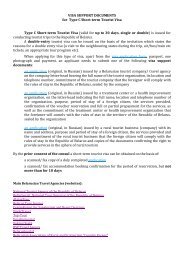FIGURE 2.3Between 2000 and 2010, Internet use grew more than 30% a year in around 60 developing countriesInternet users, 2000 (per 100 people)4.03.5Dominican Republic3.02.52.0PeruTunisiaColombiaBelarusBrazilSaudi ArabiaRussianFederation1.51.0PakistanUkraineEcuadorBosnia andHerzegovinaSri LankaMorocco0.5Egypt KazakhstanIndia UzbekistanMalawiLibyaTanzaniaSyrianArab0AngolaViet Nam AzerbaijanYemenRepublic0 10 20 30 40 50 60ChinaInternet users, 2010 (per 100 people)Note: Bubble size is proportional to total Internet subscriptions in 2010 (320,000 in Angola and 6.7 million in Viet Nam, for reference). Only developing countriesexceeding the 75th percentile of compound annual growth in Internet users are shown.Source: ITU 2012; World Bank 2012a.<strong>Human</strong> development isvital for participating inglobal supply chains;an abundance oflow-wage and low-skilllabour is not enoughresource-poor Ethiopia and Tanzania arenoteworthy for their large increase in nonincomeHDI value between 2000 and 2010 andfor their above-average FDI over the sameperiod.<strong>Human</strong> development is also vital for participatingin global supply chains. Contrary topopular perception, an abundance of low-wageand low-skill labour is not enough. Even assemblingcomponents made elsewhere can becomplex, requiring individual skills and socialcompetencies to coordinate and organize ona large scale. People can learn such skills withappropriate education, training and policysupport. Basic human capabilities are alsocrucial. 40 China, Malaysia, the Philippines andThailand in East Asia; Brazil, Costa Rica andMexico in Latin America and the Caribbean;and Morocco and Tunisia in the Arab Stateshave some of the highest trade shares in partsand components. Widespread benefits accrueonly when activities are scaled up (box 2.6).However, it should also be noted that in tradeof parts and components, the share of valueadded by any one country is generally low. Incountries where production takes place almostentirely in enclaves connected to overseas supplychains, with limited ties to the domesticeconomy, the benefits to the rest of the economyare limited. 41Helping other countries catch upAll developing countries are not yet participatingfully in the rise of the South. The pace ofchange is slower, for instance, in the majorityof the 49 least developed countries, especiallythose that are landlocked or far from worldmarkets. Nevertheless, many of these countrieshave also begun to benefit from South–South50 | HUMAN DEVELOPMENT REPORT <strong>2013</strong>
BOX 2.4Mobile phones and the Palapa Ring: connecting IndonesiaIndonesia used telecommunications technology to connect its large clusterof far-flung islands and to open the country to the outside world in waysunimaginable a generation ago. This transformation was not spontaneous:it required extensive private and public investment and prescient policyguidance from the state-run information and communications technologycouncil, Dewan Teknologi Informasi dan Komunikasi Nasional (DETIKNAS).With a diverse population stretched across a vast archipelago of nearly athousand inhabited islands, Indonesia faced formidable obstacles in itstransition to the digital age. Communications between islands was limited.Landline telephones were few, available to most ordinary Indonesians onlyin major cities and at high cost.By 2010, however, 220 million mobile phones were registered in a countryof 240 million people. An estimated 85% of adults owned phones, asstate encouragement and market competition slashed the prices of handsetsand phone service alike. The number of Indonesian Internet users hasalso grown exponentially. As recently as 2008, just an estimated 13 millionhad regular Internet access. By late 2011, more than 55 million people did,according to industry surveys. The majority of young Indonesians in urbanareas now enjoy Internet access, mostly through mobile phones, but alsothrough the country’s 260,000 Internet cafes (warnets).Through DETIKNAS the government has made Internet access a nationalpriority, building what it calls a Palapa Ring of fibre-optic cables throughoutthe archipelago. It is closing in on its goal of wiring schools in a thousandremote rural villages with Internet service and has introduced e-budgetingand e-procurement systems for its own business operations. Perhaps moststriking is the explosion of social media. In July 2012, there were 7.4 millionregistered Facebook users in greater Jakarta alone—the second most ofany city in the world, after Bangkok’s 8.7 million. In all of Indonesia, therewere 44 million Facebook accounts—almost as many as India’s 49 million.Indonesia has become a country where cabinet ministers send daily tweetsto constituents. It has the third most Twitter subscribers in the world, andenvironmentalists use online databases and Google Earth mapping tools topublicize deforestation.The human development benefits of this digital revolution are apparent,Indonesian analysts say, with mobile phones giving rural communities accessto public health information, banking services and agricultural marketinformation. Civic engagement has benefited, with online public informationservices expanding since the 2010 passage of a far-ranging access to informationlaw. The economy is profiting too. A December 2011 study by DeloitteAccess Economics calculated that the Internet economy already accounts for1.6% of Indonesia’s GDP, greater than the value of natural gas exports andcomparable to the share in Brazil (1.5%) and the Russian Federation (1.6%),though still less than in China (2.6%) and India (3.2%). Deloitte projects anincrease to at least 2.5% of GDP in five years, a substantial contributor toIndonesia’s International Monetary Fund–predicted annual GDP growth rateof 6%–7% through 2016.Source: Karimuddin 2011; Deloitte 2011.trade, investment, finance and technologytransfer.A recent study of trends over 1988–2007finds positive growth spillovers from Chinato other developing countries, particularlyclose trading partners. 42 These benefits haveto some extent offset slackening demand fromdeveloped countries. Growth in low-incomecountries would have been an estimated0.3–1.1 percentage points lower in 2007–2010had growth fallen at the same rate in Chinaand India as in developed economies. 43 FDIfrom a single source country, China, was creditedwith contributing substantially to growthrates in several African countries, including in2008–2009 when other growth impulses weredissipating. Between 2003 and 2009, the estimatedcontribution to growth from Chinese FDIranged from 0.04 percentage point in SouthAfrica to 1.9 percentage points in Zambia. Thecontribution was also high in the DemocraticRepublic of the Congo (1.0 percentage point),Nigeria (0.9), Madagascar (0.5), Niger (0.5)and Sudan (0.3). 44Commodity producers in Sub-SaharanAfrica and elsewhere have benefited from aprolonged commodity boom arising in Eastand South Asia. Cheap imports also increasethe purchasing power of low-income consumersand the competitiveness of exportorientedproducers. Some African countriesmay, however, be hampered by the enclavecharacter of extractive industries, which reducesthe potential gains from South–Southtrade and exposes economies to the risk ofDutch disease. Nevertheless, the primarysector can generate sizeable backward andforward links, as Brazil, Chile, Indonesia,Malaysia, and Trinidad and Tobago haveshown. Possibilities include agroindustry andlogistics infrastructure, as well as demand forservices (in food processing and distribution,construction, repair and maintenance), all ofwhich create jobs, income and learning andcan enable entrepreneurs to begin new cyclesof innovation and investment.Several encouraging signs are evident.The more recent investments from East andChapter 2 A more global South | 51
- Page 1 and 2:
WNSEHuman DevelopmentReport 2013The
- Page 3 and 4:
Human Development Report 2013The Ri
- Page 5 and 6:
Human Development Report 2013 TeamD
- Page 7 and 8:
Finally, the Report also calls for
- Page 9 and 10:
Heather Simpson, Ben Slay, Mounir T
- Page 11 and 12: 3.6 India’s Supreme Court issues
- Page 13 and 14: OverviewOne of the most heartening
- Page 15 and 16: and sustainability are fully incorp
- Page 17 and 18: Without investment in people, retur
- Page 19 and 20: opportunity to reap the full benefi
- Page 21 and 22: Woods institutions, the United Nati
- Page 23 and 24: IntroductionWhen developed economie
- Page 25 and 26: leading economies—Brazil, China a
- Page 27 and 28: comparable access to information, e
- Page 29 and 30: mobile phones: cellular banking is
- Page 32 and 33: “The political problem ofmankind
- Page 34 and 35: BOX 1.1Fairness, macroeconomics and
- Page 36 and 37: BOX 1.3Amartya Sen, Nobel Laureate
- Page 38 and 39: FIGURE 1.1Income per capita is risi
- Page 40 and 41: BOX 1.4Subjective indicators of wel
- Page 42 and 43: FIGURE 1.4There is notable variatio
- Page 44 and 45: FIGURE 1.6Most regions show declini
- Page 46 and 47: Progress in humandevelopment achiev
- Page 48 and 49: BOX 1.7Social competencies: human d
- Page 50 and 51: TABLE 1.3Inequality and satisfactio
- Page 52 and 53: Not all countries havethe precondit
- Page 54 and 55: “When the music changes,so does t
- Page 56 and 57: BOX 2.1The South’s integration wi
- Page 58 and 59: FIGURE 2.1As a share of world merch
- Page 60 and 61: BOX 2.2Acquisitions by the South of
- Page 64 and 65: FIGURE 2.4Export earnings per capit
- Page 66 and 67: BOX 2.6Final assembly is about more
- Page 68 and 69: Instead of having a centreof indust
- Page 70 and 71: FIGURE 2.6Emerging market economies
- Page 72 and 73: Developing countriestrade more amon
- Page 74 and 75: “We cannot expect thatall nations
- Page 76 and 77: TABLE 3.1Selected developing countr
- Page 78 and 79: A common featureof countries thatha
- Page 80 and 81: More important thangetting prices r
- Page 82 and 83: BOX 3.5Eastern Europe and Central A
- Page 84 and 85: States have to beconscious that the
- Page 86 and 87: As countries develop,they tend to d
- Page 88 and 89: Having weathered theAsian financial
- Page 90 and 91: Providing publicservices that contr
- Page 92 and 93: Advancing health requiresmore than
- Page 94 and 95: Universal public healthand educatio
- Page 96 and 97: • China. The Minimum Livelihood G
- Page 98 and 99: “Each generation will reap whatth
- Page 100 and 101: concerns will make for a complex en
- Page 102 and 103: A greater emphasison education cans
- Page 104 and 105: FIGURE 4.1Under the fast track scen
- Page 106 and 107: Around the worldpeople are calling
- Page 108 and 109: FIGURE 4.4Different environmental s
- Page 110 and 111: FIGURE 4.5Education policies can al
- Page 112 and 113:
BOX 4.2China and Ghana: who benefit
- Page 114 and 115:
FIGURE 4.8countries thus converge t
- Page 116 and 117:
“Let us join hands to try tocreat
- Page 118 and 119:
Areas of globalinternational concer
- Page 120 and 121:
Addressing climatechange requires t
- Page 122 and 123:
International governanceis increasi
- Page 124 and 125:
BOX 5.2Jo Leinen, Member of the Eur
- Page 126 and 127:
facilitates reserve investments and
- Page 128 and 129:
Responsible sovereigntytakes the lo
- Page 130 and 131:
FIGURE 5.1Under the accelerated pro
- Page 132 and 133:
Good policymakingrequires greater f
- Page 134 and 135:
A fair and less unequalworld requir
- Page 137 and 138:
NotesOverview1 Atsmon and others 20
- Page 139 and 140:
25 Blinder 2006.26 UNIDO 2009.27 UN
- Page 141 and 142:
which is 61.7 deaths per 1,000 live
- Page 143 and 144:
ReferencesAbdurazakov, A., A. Minsa
- Page 145 and 146:
urban_world_cities_and_the_rise_of_
- Page 147 and 148:
Kamau, P., D. McCormick, and N. Pin
- Page 149 and 150:
Labor Administration. Geneva: Inter
- Page 151 and 152:
Human Development Report 2013The Ri
- Page 153 and 154:
Statistical acknowledgementsThe Rep
- Page 155 and 156:
Key to HDI countries and ranks, 201
- Page 157 and 158:
Human Development Report 2013The Ri
- Page 159 and 160:
Human Development Report 2013The Ri
- Page 161 and 162:
Human Development Report 2013The Ri
- Page 163 and 164:
Human Development Report 2013The Ri
- Page 165 and 166:
Human Development Report 2013The Ri
- Page 167 and 168:
Human Development Report 2013The Ri
- Page 169 and 170:
Human Development Report 2013The Ri
- Page 171 and 172:
Human Development Report 2013The Ri
- Page 173 and 174:
Human Development Report 2013The Ri
- Page 175 and 176:
Human Development Report 2013The Ri
- Page 177 and 178:
Human Development Report 2013The Ri
- Page 179 and 180:
Human Development Report 2013The Ri
- Page 181 and 182:
Human Development Report 2013The Ri
- Page 183 and 184:
Human Development Report 2013The Ri
- Page 185 and 186:
Human Development Report 2013The Ri
- Page 187 and 188:
Human Development Report 2013The Ri
- Page 189 and 190:
Human Development Report 2013The Ri
- Page 191 and 192:
Human Development Report 2013The Ri
- Page 193 and 194:
Human Development Report 2013The Ri
- Page 195 and 196:
Human Development Report 2013The Ri
- Page 197 and 198:
Human Development Report 2013The Ri
- Page 199 and 200:
Human Development Report 2013The Ri
- Page 201 and 202:
Human Development Report 2013The Ri
- Page 203 and 204:
Human Development Report 2013The Ri
- Page 205 and 206:
Human Development Report 2013The Ri
- Page 207 and 208:
Human Development Report 2013The Ri
- Page 209 and 210:
Human Development Report 2013The Ri
- Page 211 and 212:
Statistical referencesADB (Asian De
- Page 213 and 214:
Core features of the model pertinen
- Page 215 and 216:
Countries and HDI ranks in 2012 and
















